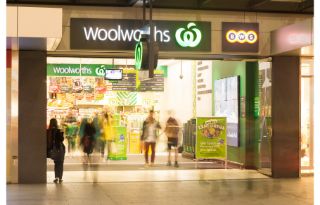Woolworths has announced it will slash more than 1,300 jobs as it transitions into automated distribution centres.
The grocery company has announced they will close two existing facilities in Sydney’s Yennora and Minchinbury and Melbourne’s Mulgrave centre, which will be replaced by two new automated distribution centres in Sydney’s Moorebank Logistics Park. Moorebank was chosen due to its rail links to Port Botany, which would lessen their reliance on transporting stock via trucks.
The new centres are expected to open in 2023 and 2024, while the existing facilities will be closed by 2025. It’s understood more than 1,300 jobs will be lost and Woolworths has signalled it expects to pay out $176 million in redundancies.
The centres will include a 34,600 sqm automated Sydney regional distribution centre that will have the capacity to receive and dispatch 6,000 products from 800 suppliers to 266 stores. And a 40,700 sqm national distribution centre that can receive and dispatch 9,000 products from 900 suppliers to 1,020 stores. Once operational, it’s estimated the move to automation will increase their product capacity by 30% and create aisle-specific pallets, which will speed up restocking.
Woolworths has partnered with logistics company Qube for the new centres and is investing significantly in the fit out and automation technology for the sites, estimating it will cost between $700-800 million and have signed an initial 20 year lease for the sites. Qube will invest between $420-$460 million in building the warehouses. Both sites will use technology already in use in their Melbourne south regional distribution centre, which has been operating for 12 months.
Chief Supply Chain Officer at Woolworths, Paul Graham, said they would strengthen their network and supply chain capabilities, adding they had seen new volume milestones in their Melbourne south centre.
“Cutting-edge automation will build tailored pallets for specific aisles in individual stores – helping us improve on-shelf product availability with faster restocking, reducing congestion in stores, and enabling a safer work environment for our teams with less manual handling,” Mr Graham said.
“The new facilities will also help progress our localised ranging efforts, with the ability to hold many thousands more products centrally than we can in our existing facilities.

